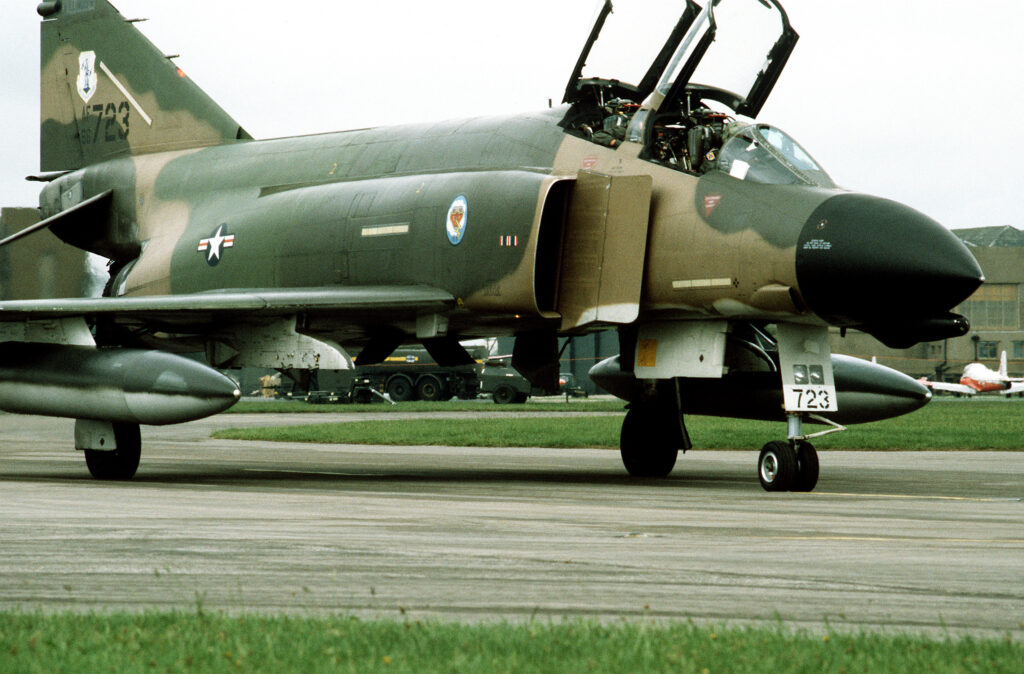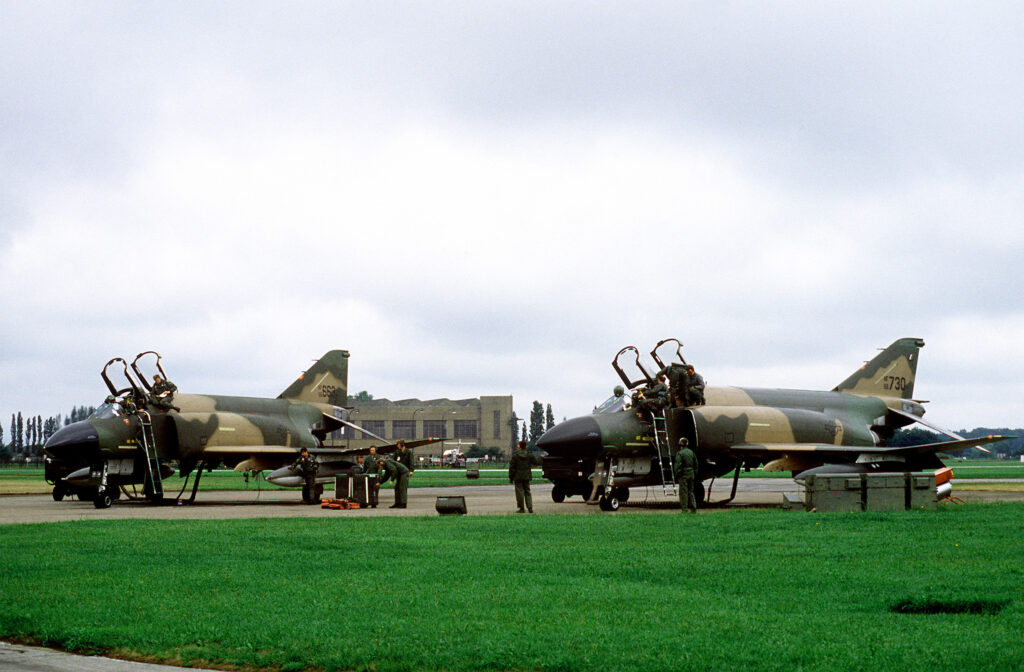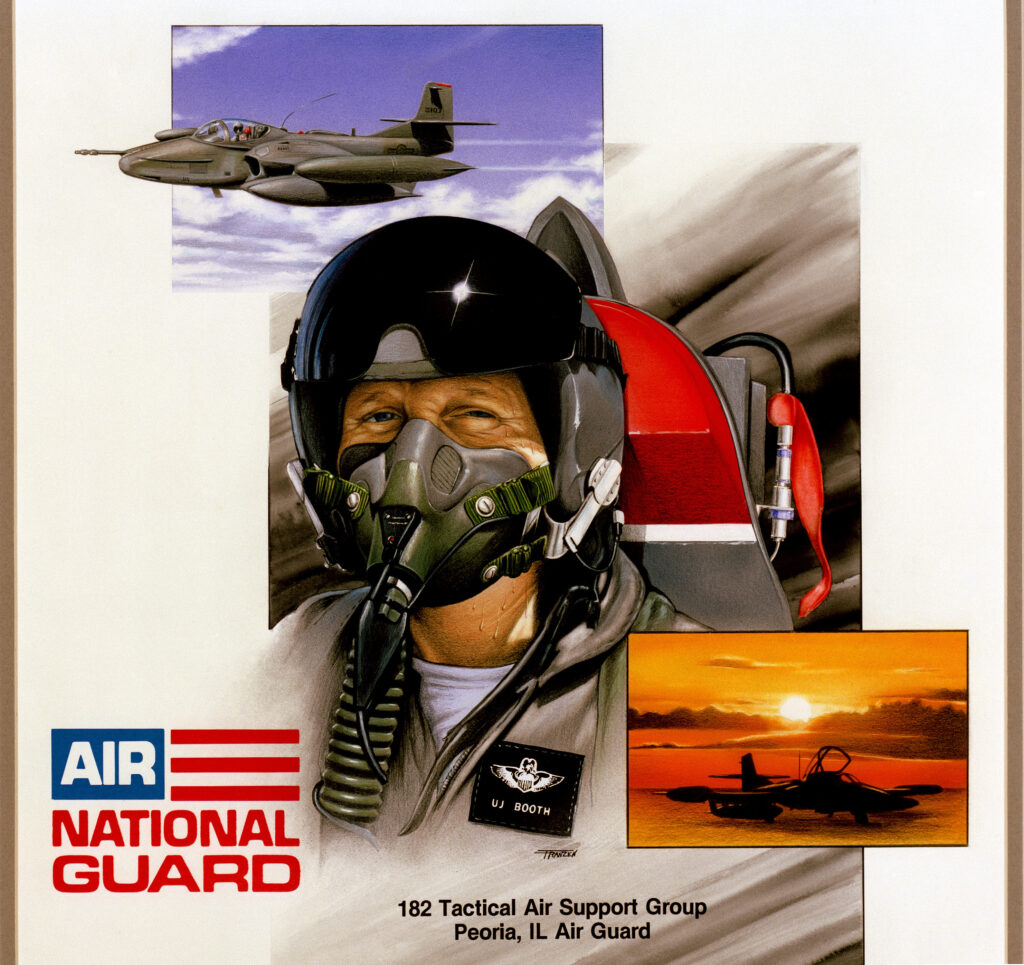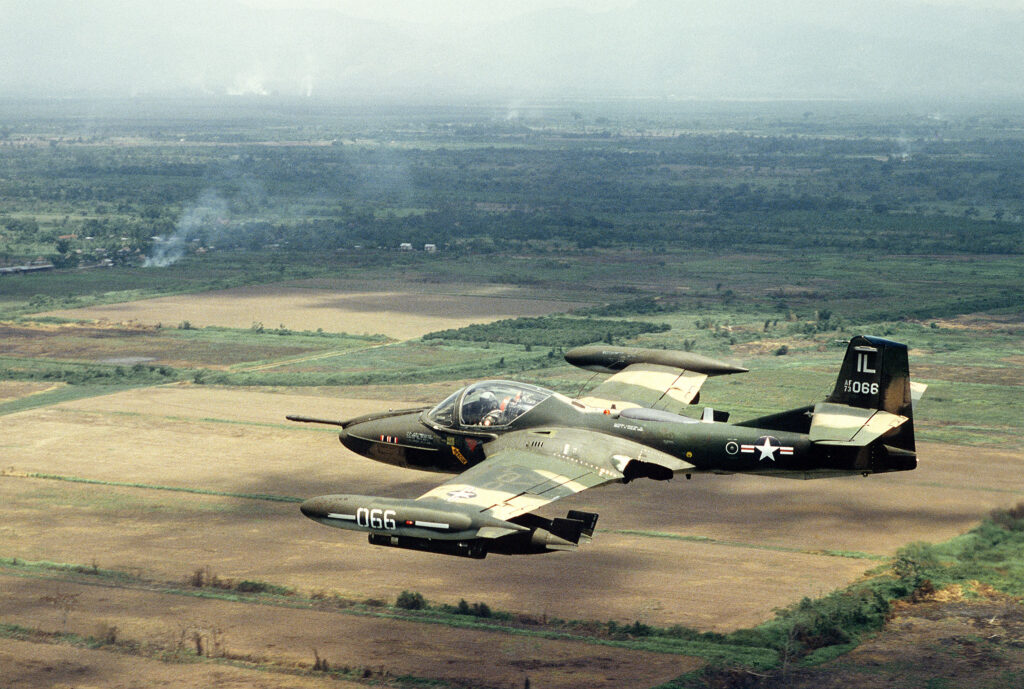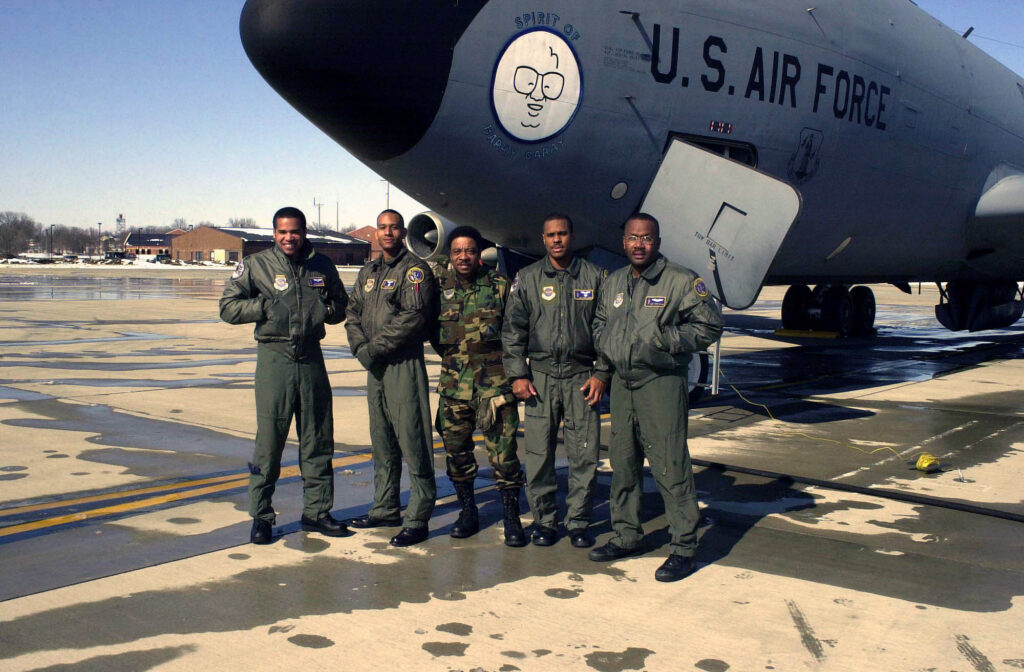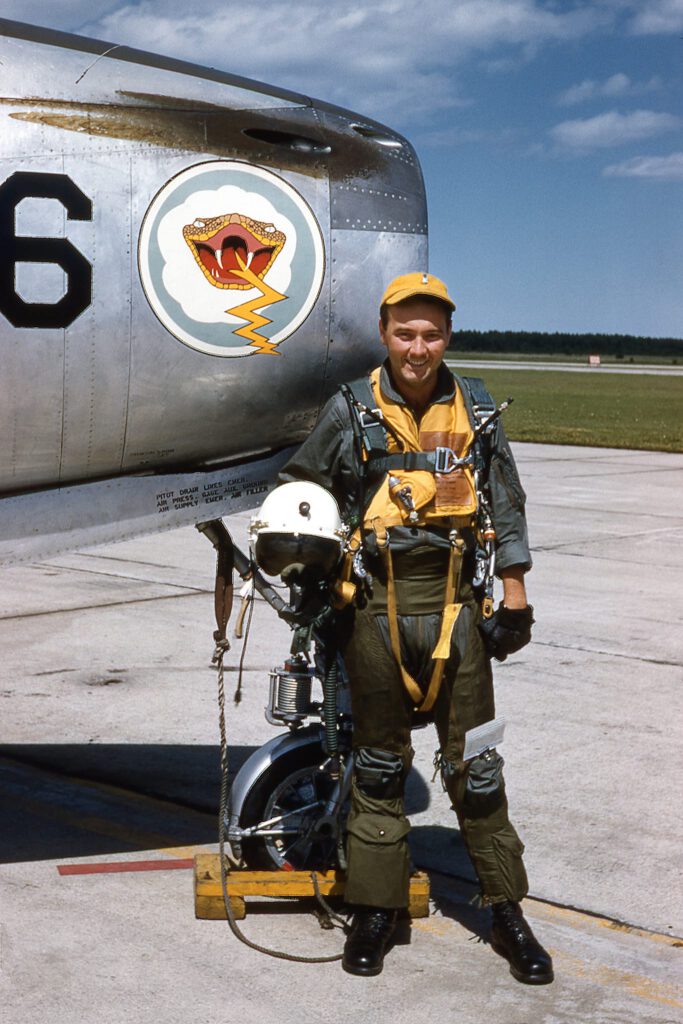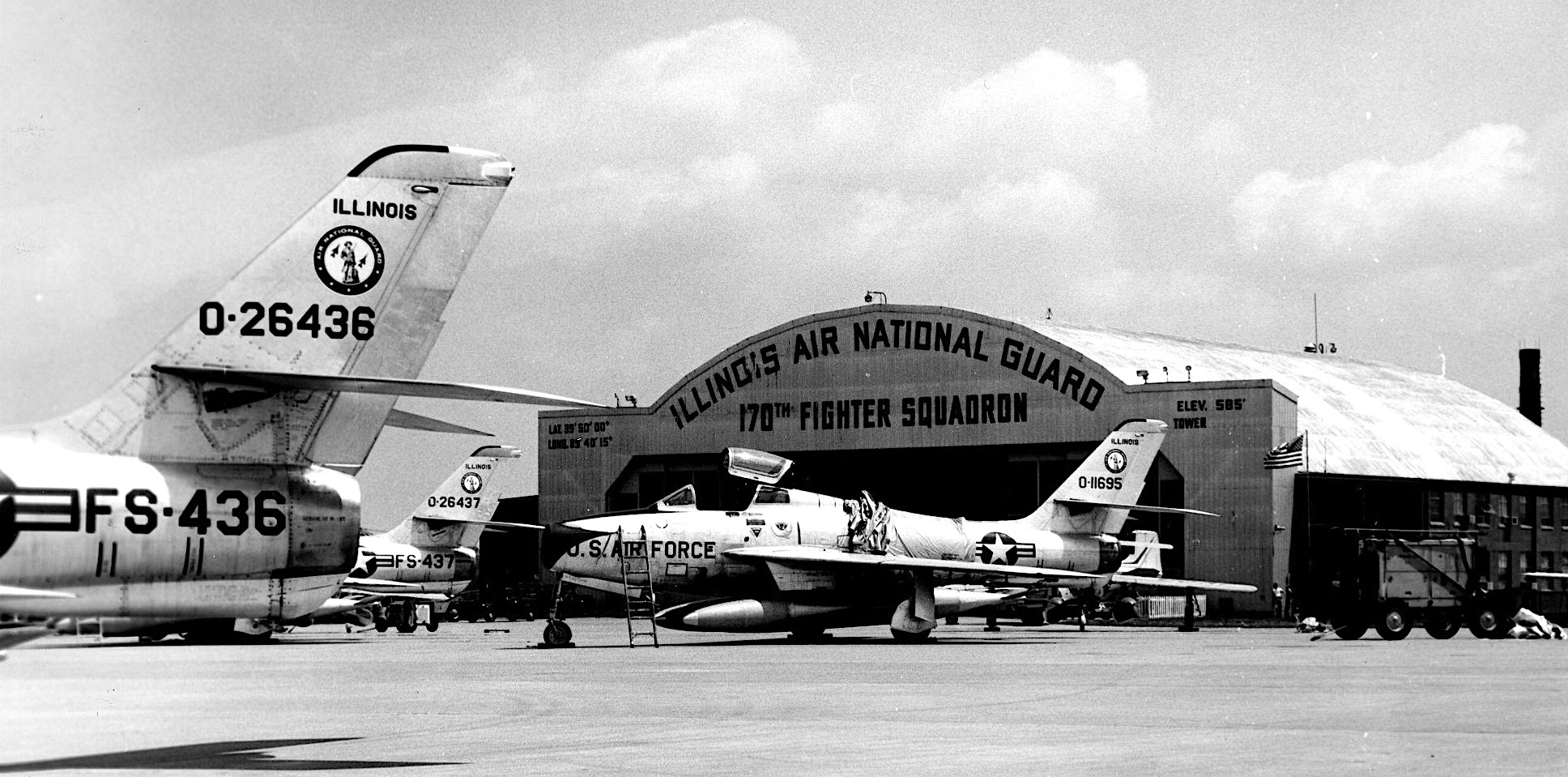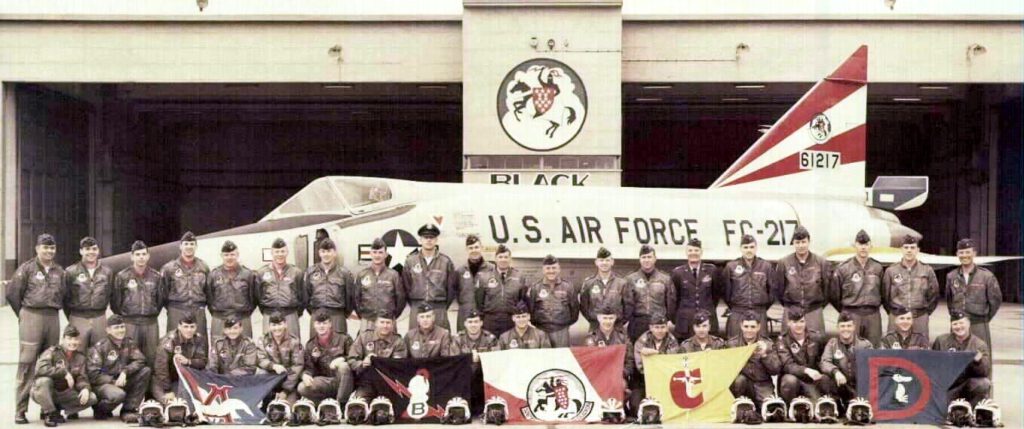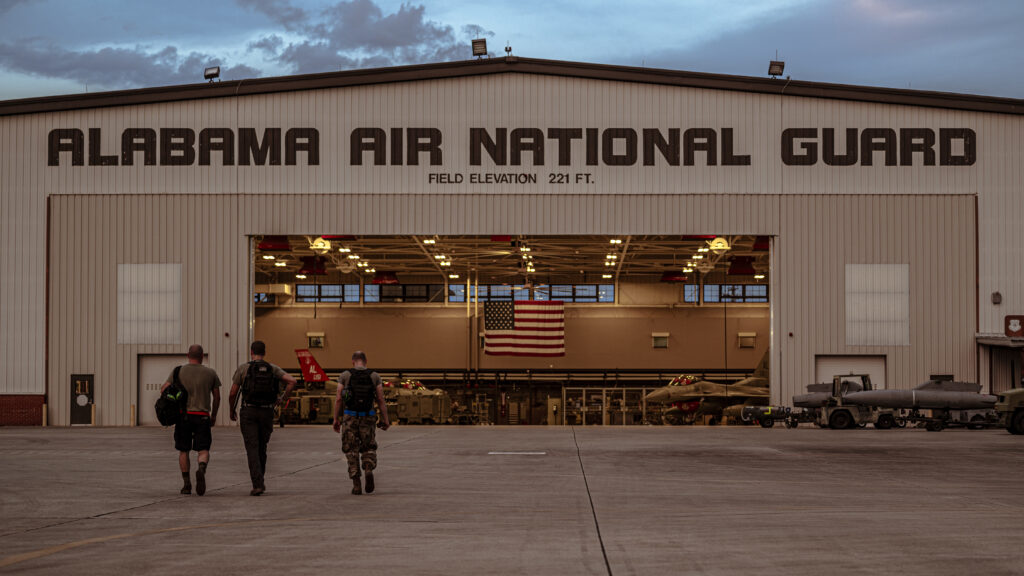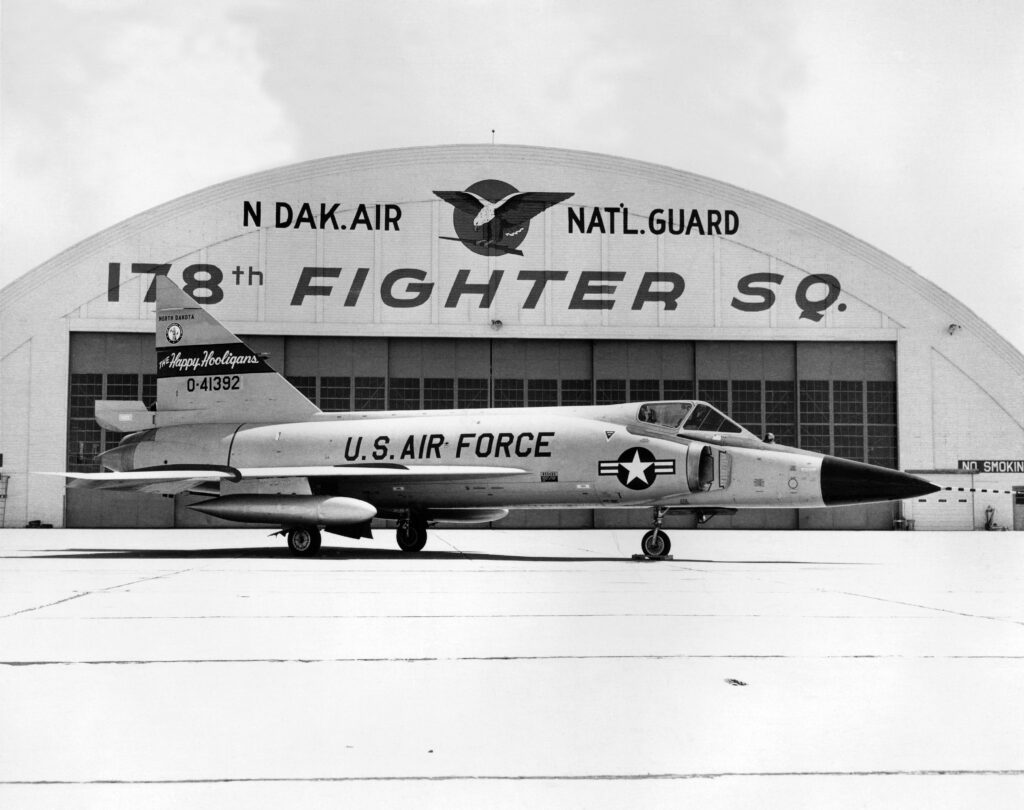The Illinois Air National Guard (IL ANG) is the aerial militia of the State of Illinois, United States of America. It is a reserve of the United States Air Force and along with the Illinois Army National Guard, an element of the Illinois National Guard and consists of the following units;
126th Air Refueling Wing
The wing was activated as the 126th Composite Wing on 1 November 1950, as the Air National Guard converted to the Wing Base Organization model of the regular Air Force. The wing lost its fighter unit and became the 126th Bombardment Wing in February 1951. The unit was ordered to active service on 1 April 1951 as a result of the Korean War. The unit was initially assigned to Tactical Air Command at Langley Air Force Base, Virginia.
The wing moved to Bordeaux-Merignac Air Base, France with the first elements arriving in November 1951. It was assigned to Twelfth Air Force. By 10 November, Bordeaux was considered an operational base. The 126th was assigned the 108th, 168th and 180th Bombardment Squadrons. The aircraft were marked by various color bands on the vertical stabilizer and rudder. Black/Yellow/Blue for the 108th; Black/Yellow/Red for the 168th, and Black/Yellow/Green for the 180th. It flew B-26’s for training and maneuvers and stayed at Bordeaux until moving to Laon-Couvron Air Base, France on 25 May 1952 where it remained for the balance of the year. The 126th was relieved from active duty and inactivated on 1 January 1953, transferring its personnel and equipment to the 38th Bombardment Wing, which was simultaneously activated. It was activated in the Illinois Air National Guard the same day as the 126th Fighter-Bomber Group. It flew North American F-86 Sabres. In 1955, it was redesignated the 126th Fighter-Interceptor Wing, and equipped with F-86Ds. In 1958, it was reorganized along the lines of active duty Air Defense Command units, becoming the 126th Air Defense Wing.
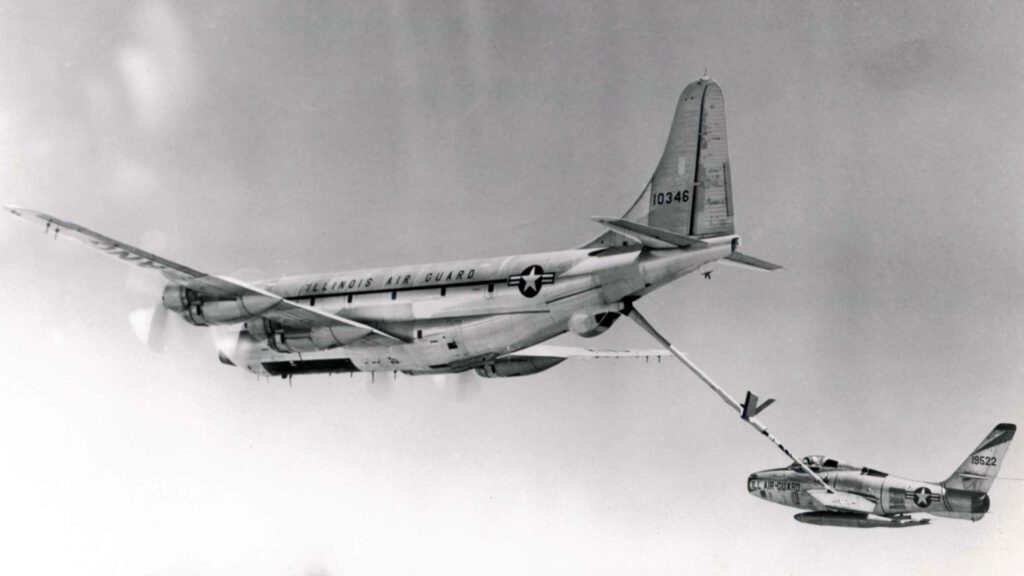
On 1 July 1961, the 126th’s mission was changed to air refueling one and it was redesignated the 126th Air Refueling Wing, flying Boeing KC-97 Stratofreighter aircraft. The 126th flew KC-97Ls for a brief time before converting to Boeing KC-135A Stratotankers. In 1978 the KC-97s were sent to AMARC. Many of the 126th’s KC-97Ls became gate guards and one is on the field of the former Grissom Air Force Base, Indiana, where the 126th conducted many hours of transition practice.
In 1983 the wing began receiving the KC-135E as a replacement for the KC-135A model “water-wagons”, a named used because of 110 seconds of water injection, used to increase thrust for take-off power. With the inactivation of SAC, the group was gained by Air Mobility Command on 1 June 1992.
Post Cold War
The 126th moved from the former Air Reserve Station at O’Hare International Airport in 1999 as recommended by the Base Realignment and Closure Commission’s Report to Congress in conjunction with the closure of the Air Force Reserve and Air National Guard facilities at O’Hare. In 2000, the unit’s KC-135E aircraft were upgraded with the new Pacer CRAG (Compass, Radar & GPS) avionics systems. In 2008, the unit completed a transition to KC-135R aircraft as the KC-135E fleet was retired
182nd Airlift Wing
What is now the 169th Airlift Squadron originated during World War II as the 304th Fighter Squadron, which was activated on 23 July 1942. The 304th was assigned to the 337th Fighter Group at the Pinellas County Airport, Florida, and served as an operational training unit equipped with the P-39 Airacobra and the P-40 Warhawk. The 304th was disbanded 1 May 1944, and reconstituted 24 May 1946, re-designated the 169th Fighter Squadron and allocated to the Illinois National Guard.
The 169th Fighter Squadron held its first drill in December 1946 under the command of Lt. Col. Ralph Pickering, and it received federal recognition on 21 June 1947. The unit consisted of 40 officers and 215 Airmen by the end of its first year. The original base consisted of a shale runway and a single hangar for eight F-51 Mustang fighters, four AT- 6 Texan trainers and a B-26 Marauder tow target plane. The first annual training was held at Chicago Municipal Airport, now known as Chicago Midway International Airport, with flying done at Douglas Field, now known as O’Hare International Airport. In 1952, the 169th Fighter Squadron was re-designated the 169th Fighter Interceptor Squadron and then the 169th Fighter Bomber Squadron.
A large construction project had expanded the base facilities by 1953, and in 1954 the 169th obtained the copyright for the Indian Chief, the cartoon character from Walt Disney’s feature film “Peter Pan”, to display as their emblem. The squadron received its first F-84F Thunderstreak in 1958.

The unit flew the first ever Air National Guard air- to-air refueling mission in 1961.[1] On 15 October 1962, the Illinois Air National Guard authorized the 169th Tactical Fighter Squadron to expand to a group level, and the 182d Tactical Fighter Group was established by the National Guard Bureau on 15 October 1962. The 169th TFS became the group’s flying squadron, equipped with F-84F Thunderstreaks. Other squadrons assigned into the group were the 182d Headquarters, 182d Material Squadron (Maintenance), 182d Combat Support Squadron, and the 182d USAF Dispensary.
During the 1960s the squadron continued to operate its F-84F Thunderstreaks, and the unit was not activated during the Vietnam War. In May 1969, the F-84Fs were retired and 182d TFG was re-designated as the 182d Tactical Air Support Group (TASG); flying Forward Air Control (FAC) missions. The 169th was equipped with light observation U-3A/B Blue Canoe and in January 1970, the O-2A Skymaster aircraft. The group’s mission being to perform visual reconnaissance, as the FAC flew light aircraft slowly over the rough terrain at low altitude to maintain constant aerial surveillance over a combat area. By patrolling the same area constantly, the FACs grew very familiar with the terrain, and they learned to detect any changes that could indicate enemy forces hiding below. Members of the 182d TASG provided relief assistance during state active duty for the Canton tornado disaster in July 1975. In 1976, the 182d TASG was awarded its first Air Force Outstanding Unit Award.
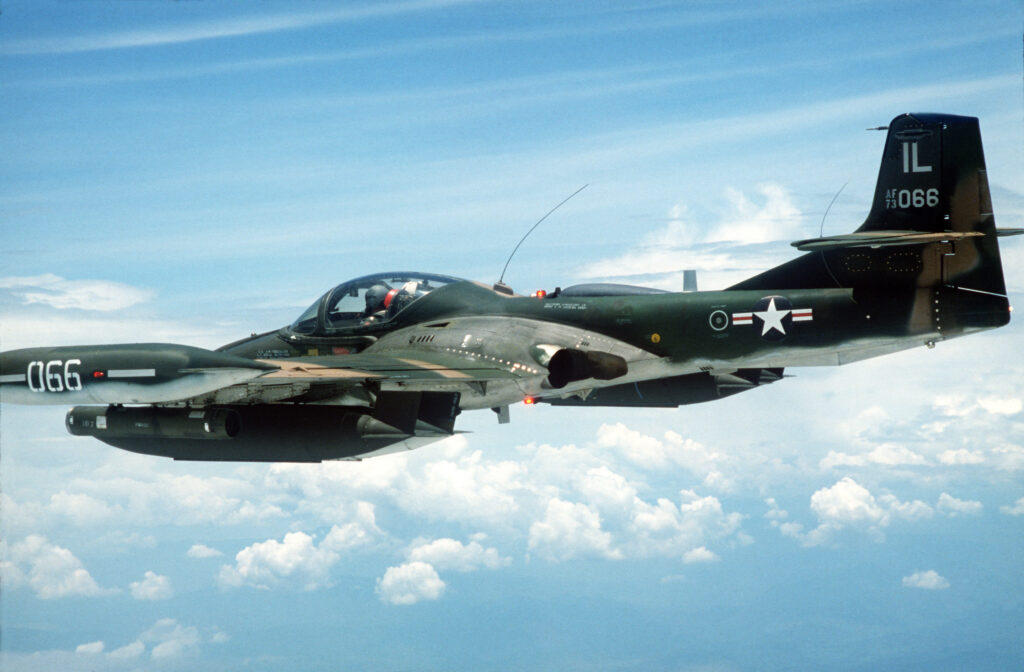
In 1979, the squadron received OA-37B Dragonfly jet FAC aircraft from the New York and Maine Air National Guard, continuing the FAC mission. The 182d TASG received an “Excellent” rating on its first Operational Readiness Inspection (ORI) under the 12th Air Force, and the group was awarded its second Air Force Outstanding Unit award in 1985. In January 1991, 138 group personnel were called to active duty during the 1991 Gulf War and deployed to United States Central Command Air Forces (CENTAF).
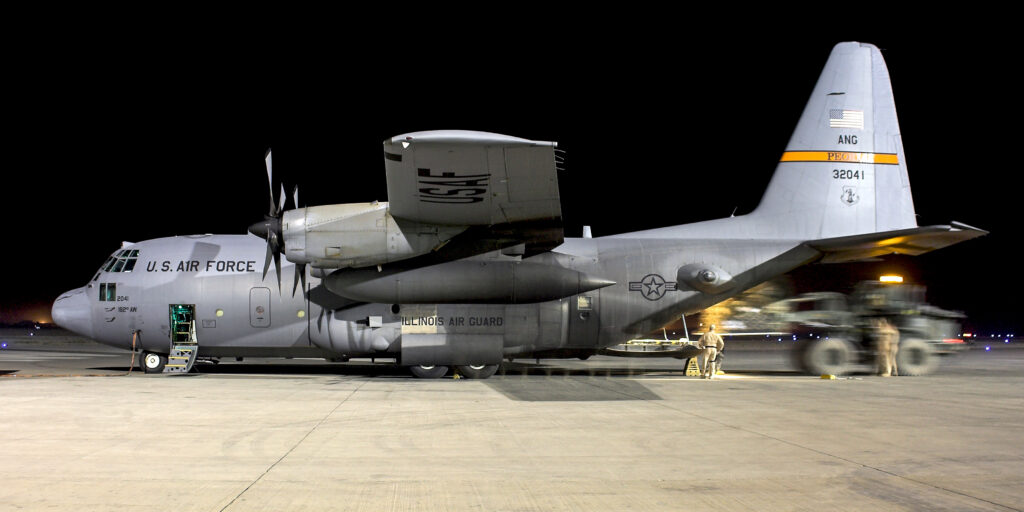
War on Terrorism
After the September 11 attacks, members of the wing were called up to support the Air Force at various locations around the world. During a September 2002 deployment to Oman, wing aircraft flew combat supply missions into Afghanistan for Operation Enduring Freedom. On 29 March 2003, SSgt Jacob Frazier of the 169th Air Support Operations Squadron (ASOS) was killed in action while serving with Army Special Forces in Afghanistan. He was the first member of the wing to die in combat.
In March 2003, immediately following mobilization, six aircraft and over 350 personnel were deployed to Minhad, United Arab Emirates, for Operation Iraqi Freedom. These airmen returned in August after providing airlift support throughout the theater. Since that mobilization, smaller numbers of wing personnel and aircraft have continually supported Operations Enduring Freedom and Iraqi Freedom. On 28 December 2003, a wing crew delivered earthquake relief supplies to Iran, becoming the first US aircraft to land there since 1981.
Beginning in January 2005, the wing converted from the C-130E to the newer H3 model. In October 2006, the wing received a rating of “Excellent” after serving as the lead wing during an AMC ORI. On 3 February 2007, the wing was awarded its third Air Force Outstanding Unit Award for the period from 1 August 2003 to 31 July 2005. Some personnel remain deployed to combat zones as part of Air and Space Expeditionary units while other members of the wing continue routine worldwide support to the Air Force.
In 2017, 182d deployed four C-130H3 aircraft together with maintenance and aircrew to an undisclosed location in Southwest Asia for a four-month Operation Inherent Resolve deployment, supporting U.S. and Iraqi forces in Iraq. July 2019 saw 182d participate in the annual Exercise Northern Strike 19 in Northern Michigan. Crew undertook missions included simulated attacks from surface to air missiles and cargo air drops coordinated with ground JTACs.The wing’s aircraft were operating from the Alpena Combat Readiness Training Center in Alpena, Michigan.
Post Cold War era
In March 1992 the A-37s were finally retired. and the group received the Block 15 F-16A/B Fighting Falcon Air Defense Fighter (ADF). It was re-designated as the 182d Fighter Group on 15 March. In June 1993, members served on state active duty in response to the Mississippi River flooding of southern Illinois.
Due to government budget constraints and military restructuring after the Cold War, the 182d FG converted to the C-130E Hercules and was re-designated the 182d Airlift Wing (AW) effective 1 October 1995. In 1996, the wing began participation in ongoing flying missions for Operation Joint Endeavor in Bosnia. In 1997, the 182d AW celebrated its 50th anniversary and received an “Excellent” in its first Air Mobility Command (AMC) ORI.
183rd Fighter Wing
On 15 October 1962, the Illinois Air National Guard 170th Tactical Fighter Squadron was authorized to expand to a group level, and the 183rd Tactical Fighter Group was established by the National Guard Bureau. The 170th TFS becoming the group’s flying squadron. Other squadrons assigned into the group were the 183rd Material Squadron, 183rd Combat Support Squadron, and the 183rd USAF Dispensary.
The 170th Tactical Fighter Squadron was equipped with Republic F-84F Thunderstreaks. It continued to fly the aircraft throughout the 1960s. The squadron was not activated for service during the Vietnam War, although from 1968 to 1971 many of its personnel were activated and some saw service in Southeast Asia. All F-84Fs were grounded in November 1971, after a 170th pilot was killed when his plane lost a wing during exercises at the Hardwood Gunnery Range in Findley, Wisconsin. The accident was caused by the “milkbone” joining bolt in the main wing which had been weakened by years of flying and failed in-flight. All RF-84F aircraft were immediately grounded after inspections of other F-84Fs in the Air National Guard found the same issue affected many other aircraft. The problem was deemed too widespread to justify the economic repair of the aircraft, and it was decided to retire the ANG’s fleet of F-84Fs and replace them with more modern aircraft. In 1972 the 170th F-84s were given a 2G ferry flight permit to the Aerospace Maintenance and Regeneration Center at Davis-Monthan Air Force Base, the 170th having the distinction of flying the F-84F longer than any other USAF/ANG squadron.
In January 1972, the 183rd Fighter Group was the first Air National Guard unit to receive the McDonnell F-4C Phantom II, with its aircraft being Vietnam War aircraft that were returning from Southeast Asia. Along with the F-4C, a flight of RF-4C Phantom II reconnaissance aircraft were received. In 1981, the F-4Cs were exchanged for the F-4D Phantom II.
Post Cold War era
The 170th saw its first General Dynamics F-16A Fighting Falcon on 7 June 1989 when two landed at Capital Airport to replace the aging F-4D Phantom II. By 5 May 1990, the 170th TFS was operational with the F-16A. Its mission at the time was fighter attack and was provided the Block 15 for this job. On 15 March 1992 the squadron changed designation from the 170th Tactical Fighter Squadron to the 170th Fighter Squadron when its parent 183rd Fighter Group adopted the new Air Force Objective organization plan.
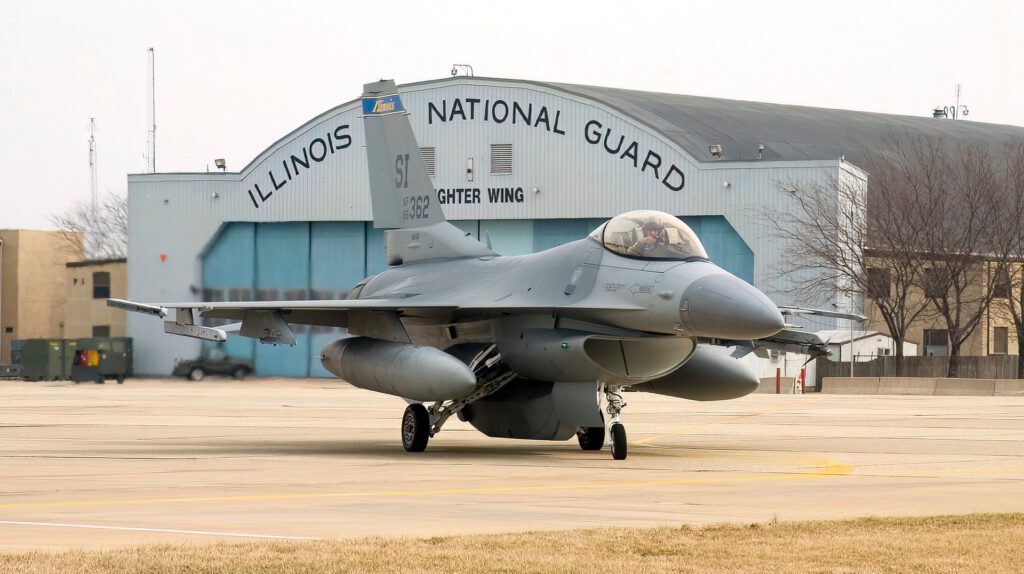
During early 1994 the 170th FS started to exchange their Block 15 F-16A/B for Block 30 F-16C/D Fighting Falcon with the big inlet design. Most of the Block 15s were retired straight to AMARC. During the 1990s, the unit conducted numerous overseas deployments, including six to Southwest Asia, two to Denmark, one to Panama, one to Curaçao, and one to Thailand.
Global War on Terrorism
170th Expeditionary Fighter Squadron F-16C 87-0294 at Balad AB, Iraq, takes off on an Operation Iraqi Freedom mission on 21 July 2006
After the 11 September 2001, attack, the 170th FS increased its capability by obtaining AN/AAQ-28(V) LITENING targeting pods in October 2001. Training with the new pod started immediately and included some internal personnel as some were trained on use of the pod as well as training from the Wisconsin ANG. The purpose of the training was to get ready for deployment in March 2002 for Operation Enduring Freedom.
Starting in January 2002 the 170th FS deployed for two weeks to Tucson Air National Guard Base, Arizona for final training with the LITENING pod. Initially the deployment in March 2002 was to be with two other ANG units but this changed due to Operation Noble Eagle air defense commitments. As a result, the 170th FS deployed by itself as the 170th Expeditionary Fighter Squadron (170 EFS). When the 170th EFS arrived it replaced the 18th EFS which was normally based at Eielson Air Force Base in Alaska. On top of duties over Afghanistan, the 170th FS also had to perform air interdiction missions over Iraq in support of Operation Southern Watch.
In the very early morning on 17 April 2002 while on deployment in Afghanistan a pilot in a two-ship formation from the 170th FS mistakenly bombed a Canadian force which was practicing live firing of its weapons near Kandahar, Afghanistan. Four soldiers were killed and eight were injured. This tragedy dogged the 170th FS for years and a trial against the pilots began in Springfield.
After more than two consecutive years deployed overseas the 170th FS participated in Operation Iraqi Freedom when they deployed to the region in October 2004.
BRAC 2005
The 2005 Base Realignment and Closure Commission committee report recommended the retirement of the block 30 F-16 Fighting Falcon, and the inactivation of the 170th Fighter Squadron. Despite challenges by the governor of Illinois in federal court, the aircraft began to be retired, and ultimately the US District Judge stated that there was not enough evidence to support that the region would suffer major harm by the closure of the unit. The last F-16 departed on 23 September 2008, marking the end of the flying mission for the 183rd Fighter Wing.
Due to the outstanding quality of work historically exhibited by the 183rd Fighter Wing, the new mission outlined by the BRAC commission recommended the facilities and notable skill sets of personnel assigned be realigned into a Centralized Intermediate Repair Facility.
Current status
On 4 March 2017, the 183rd Fighter Wing was redesignated as the 183rd Wing (183 WG)
Illinois Air National Guard Photos

